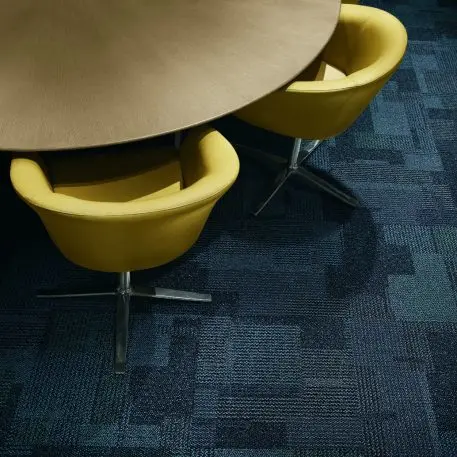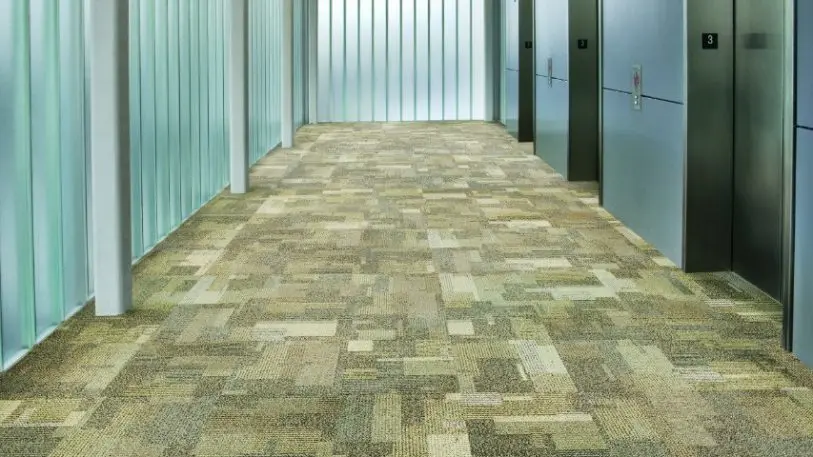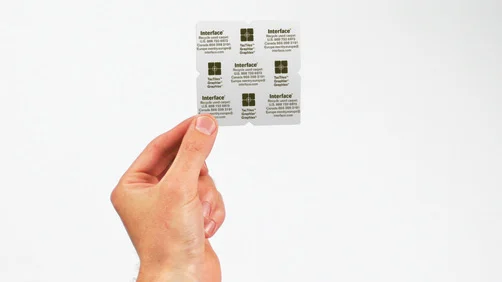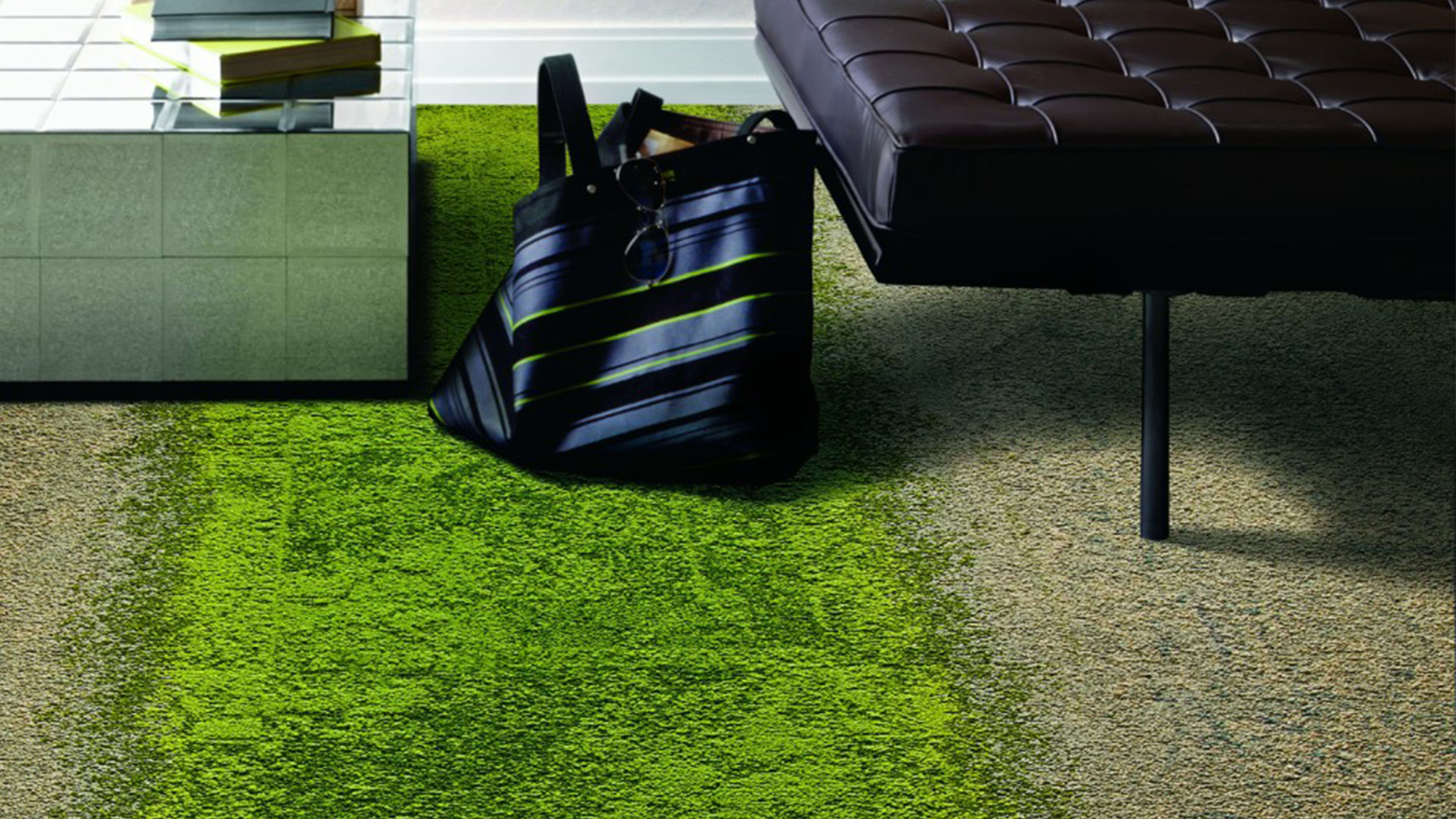We encounter carpeting every day, in offices, homes, stores–almost any interior setting. According to the Environmental News Network, carpets and rugs cover 70% of all flooring in the United States, a figure largely credited to the rise of corporate America and the white-collar workforce of the 1970s and ’80s. Much of that carpeting derives from vinyl, and until 25 years ago, hardly anyone was aware of the harmful effects of a petroleum-based production chain that releases hundreds of thousands of pounds of toxins and harmful chemicals into the environment and our bodies.
Nowadays, those risks are more common knowledge, largely brought to light by one of the world’s largest manufacturers of industrial carpeting, Interface Inc. Its late founder and chairman, Ray C. Anderson, made it a personal mission to set in place a “midcourse correction” of the industry that was his lifeblood–seemingly against his own business interests. But the new mission was a rousing success; under it, the company doubled its sales and profits.
Today, Interface faces competition from manufacturers who spot a business opportunity in environmentally minded flooring as climate change becomes an international crisis. In the absence of its founder, who died in 2011, will Interface be able to uphold his legacy?

A spear in the chest epiphany
Anderson spent more than two decades growing a modest operation into a global, lucrative billion-dollar operation. Then he began to steer his company toward radically sustainable practices in 1994, after reading Paul Hawken’s The Ecology of Commerce, which triggered in him a profound “spear in the chest” epiphany, as he said in a 2009 TED talk. Curious to know his company’s exact environmental footprint, Anderson had his engineers calculate the waste cost of its overhead, and was shocked by the findings: more than 1 billion pounds of raw virgin materials, a majority of it oil and natural gas, used to produce nylon and polyester-based textiles that were the backbone of his product line–not to mention the whole carpet industry. It was then that Anderson resolved to disrupt his own business model.
For the following 17 years, up until his death in 2011, Anderson worked to meet the requirements of Mission Zero, Interface’s program and pledge to halt the use and production of virgin materials by 2020. On his watch, the company launched the ReEntry buyback program, its first major sustainability initiative, in 1995. The program collects and reclaims post-consumer, vinyl-backed carpet tiles–whether or not they’ve been produced by their competitors–as a core source of its manufacturing process. The ReEntry program, which continues today, has since diverted more than 360 million pounds of carpet to date in North and South America. Such programs are fairly common in retail nowadays, but that wasn’t the case in 1995–and it made environmentalists hail Anderson as an unlikely hero of the sustainable movement.
“Carpet tiles aren’t like yogurt or baby bottles: it’s very much a commodity product used in the contract trade,” says Bill Walsh, a Greenpeace veteran and founder of the Healthy Building Network. “He really took full responsibility without equivocation for the impact of his business. And I don’t think anybody had really ever done that, in an industrial, contract-facing business.”

The right moment
Architect and sustainability leader William McDonough, along with a handful of scientists, activists, and entrepreneurs, had been called upon to participate in an “Eco Dream Team” that Anderson assembled to help advise on Interface’s “midcourse correction,” as he called it. It was auspicious timing. This was just one year after the U.S. Green Building Council’s introduction of LEED in 1993. The green building standard, short for Leadership in Energy and Environmental Design, incentivized the transformation of the building, construction, and materials industries by awarding and rating projects by environmental performance. It made green flooring a hot commodity, and Interface was there to reap the rewards. Anderson went on to pen three books about the experience: Mid-Course Correction, in 1998; and Confessions of a Radical Industrialist and Business Lessons from a Radical Industrialist, both published in 2009. “Spreading his message to the corporate world and beyond, he [became] a great proselytizer for a gentler way of doing business,” McDonough, author of the seminal book Cradle to Cradle, declared in a 2007 Time Magazine piece.

The challenge ahead
Today, competitors at companies such as Shaw and Mohawk offer a range of environmentally focused programs that threaten Interface’s eco-dominance. Interface itself has a major challenge ahead to meet the standards Anderson laid out; the company is less than two years away from Anderson’s initial 2020 goal. And Interface has come under fire for new initiatives, including the launch of a luxury vinyl tile (LVT) product offering last year, which some environmental advocates have criticized for catering to a demand for vinyl products, rather than curtailing it.
Short of eliminating the entire product category, which is unlikely to happen anytime soon, Interface has been working to reinvent it, striking a balance between profit and public interest to the best of its ability. “Not all vinyl is created equal,” as Interface’s current CEO, Jay Gould, explains, noting that the LVT collections are made from recyclable PVC, and “optimized for recycling” in the manufacturing process.
Gould is mindful of the legacy he has to uphold. Under Gould’s leadership, the company has implemented a Climate Takeback program to achieve a carbon-negative business model that makes use of raw materials that can harness carbon from the environment. And earlier this year, Interface became among the first flooring companies to announce a goal of carbon neutrality. Interface has reduced the average carbon footprint of its products by an estimated 60%–and to account for the other 40%, it offsets the carbon impact of its products by funding initiatives like renewable energy and reforestation through its Carbon Neutral Floors program. “We really talk about four key stakeholders,” Gould adds. “Our customers, our employees, our shareholders–and the environment.”
Interface was a winner of the Timeless Design category in the 2018 Innovation By Design Awards. See all honorees here.
Recognize your brand’s excellence by applying to this year’s Brands That Matter Awards before the early-rate deadline, May 3.
